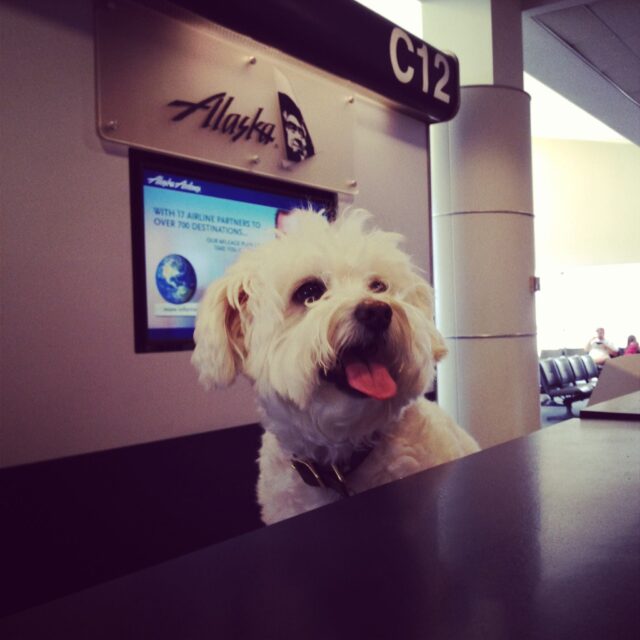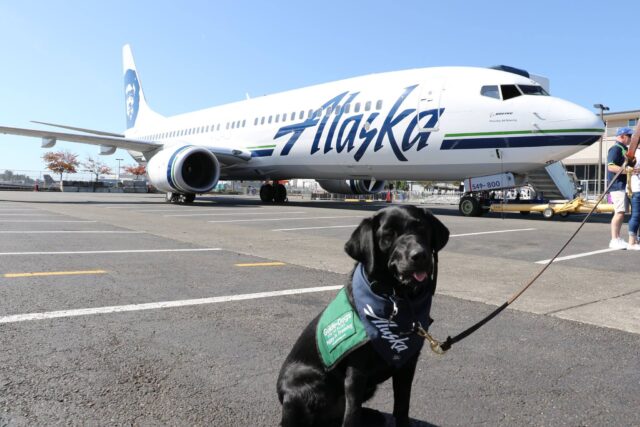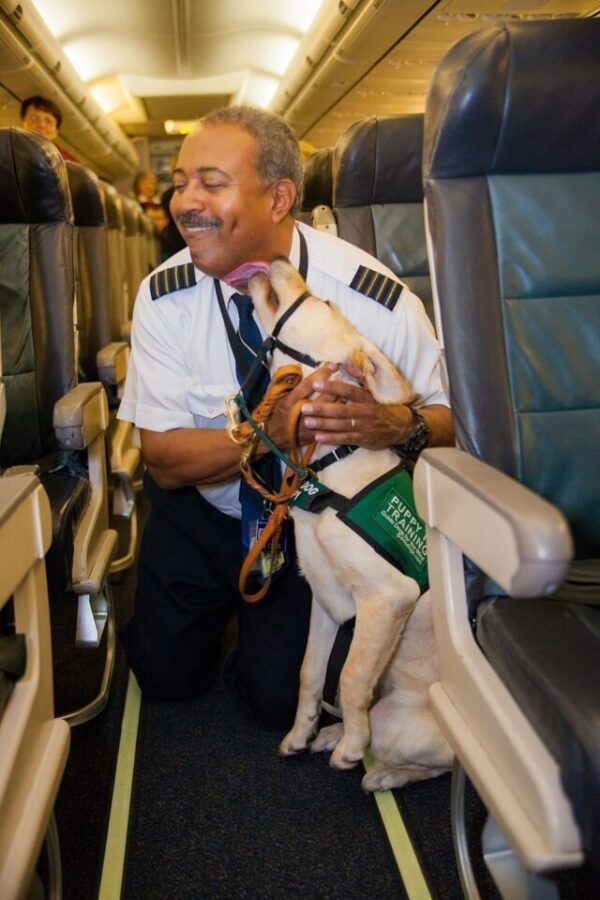For many years emotional support dogs have been treated the same as service dogs on flights. They’ve been allowed on board for no extra cost and often no questions asked. But when the Department of Transportation recently ruled that emotional support animals (ESAs) no longer need to be accommodated on flights the same way as service dogs, airlines quickly reconsidered their rules.
Alaska Airlines will be the first to change their rules since the announcement. ESAs will no longer get the same benefits as specially trained service dogs.

New Animal Policy
Starting February 28th, 2021, Alaska Airlines will no longer accept ESAs on their flights. Instead, their humans will have to pay for them to fly under regular pet policy requirements.
The main difference between service dogs and emotional support dogs is that service dogs are trained to perform specific tasks. ESAs are just there to comfort their humans, but should still be prescribed by a medical professional.
Every year more and more people register their dogs as emotional support animals through sites that aren’t credible. So airlines have had many problems with fake ESAs causing disruptions on flights. Some passengers have even tried to bring more unusual animals on board, claiming that they’re ESAs. Airlines have witnessed emotional support peacocks, ponies, pigs, turkeys, bunnies, and even kangaroos!

“Effective January 11, 2021. Alaska will accept only service dogs which are trained to do work or perform tasks for the benefit of a qualified individual with a disability. Emotional support animals will no longer be accepted,” Alaska Airlines wrote.
What to Expect for Future Flights
If you book a flight by January 11th, 2021 that takes off before February 28th, 2021, you can still have your ESA fly for free. But after February 28th, all ESAs will be treated as regular animals on flights. Service dogs trained for specific tasks will still be allowed on for free with their usual rules.
Space for animals on flights varies based on availability. Also, animals must meet the requirements of the flight, such as fitting under the seat in front of you, being at least 8 weeks old, and staying in their carrier for the duration of the flight. Unlike other airlines, they don’t outright ban specific breeds, but they don’t allow short-nosed breeds in the cargo area due to their breathing problems.

In an ideal world, ESAs could fly just as easily as service dogs. But there have been too many fake ESAs causing problems, so airlines are left with no choice. Perhaps there will be an easier way to stop fake ESAs and fake service dogs in the future. But for now, these are the rules Alaska Airlines is standing by and other airlines are sure to follow suit.
This is further proof that pretending to depend on a dog only hurts those who really need them.
H/T: forbes.com
Featured Image: @alakaairlines/Facebook
 Toledo, United States.
Toledo, United States.